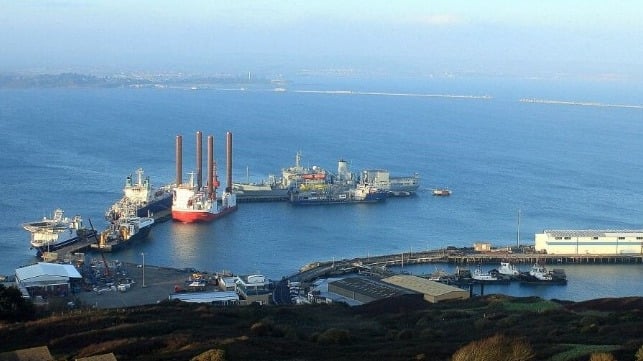Gas Company Seeks to Excavate H2 Storage Caverns Under Portland Port

A British energy company plans to dig a massive salt cavern under a former naval base in order to provide a buffer for utilities and other consumers, and it expects to win fast-track approval and government support for the project. If constructed, the one-billion-cubic-meter storage facility under Portland Port would be twice as large as all other salt cavern complexes in the UK combined - and another one billion cubic meters of capacity is in the planning for a second phase of development.
Salt caverns are ideal for storing hydrogen because they are airtight and relatively easy to excavate. The presence of salt means that the formation is solidly enclosed and has no water infiltration, because water would have dissolved out the highly soluble salt layer. By the same token, the developer can create caverns in the salt layer by drilling a well, injecting water, and dissolving out salt until the desired size and shape of the cavity is reached. In this case, the caverns would be about 300 feet wide, with about twice the volume of St. Paul's Cathedral in London.
The location at Portland Port is ideal, according to UKOG subsidiary UKEn. It is close to the Solent Cluster of industrial sites, near to the Hinkley Point nuclear plant, and well-situated to take advantage of a new source of offshore wind power off Portland Bill. It is also nearer to London than any other geological storage facility.
UKEn says that it would have enough space to provide about one fifth of the UK's 2035 hydrogen storage needs, plus enough space to serve as a hydrogen battery for smoothing the ups and downs in the renewable power supply.
One of its core suppliers would be a planned natural gas-to-hydrogen plant at the Bacton Energy Hub, sponsored by Sumitomo. This plant will use carbon capture and storage technology to manage most of the CO2 it creates when splitting methane into H2 and carbon dioxide, and it plans to send much of its production to the Portland Port salt caverns for distribution.
When first announced in 2022, the facility was pitched as a "hydrogen-ready" storage site for natural gas, and was to be developed in tandem with a new LNG import facility within the port.
Portland Port has hundreds of years of history as a commercial and naval seaport. It was a major Royal Navy base up until 1995, and it has become an important port for agricultural interests, cruise lines and offshore operators.
